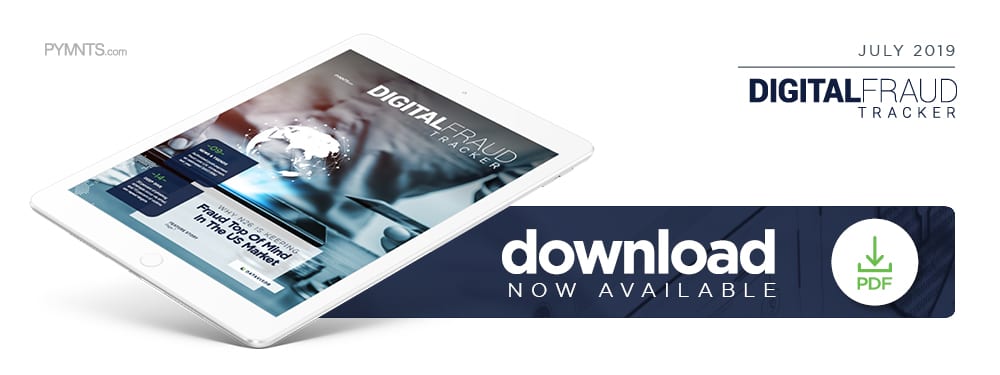
Meeting a consumer’s banking needs requires FIs to think locally — but when it comes to fighting fraud, it pays to think globally. That’s why FIs need to stay ahead of fraud trends both domestically and internationally, says Nicolas Kopp, U.S. CEO for German challenger bank N26. In the latest Digital Fraud Tracker, Kopp discusses how N26 is using customer data from 24 countries to better protect users against fraud attacks as it enters the U.S. market.
 Customers have varying banking needs, but the global fraud phenomenon tends to have equal impacts. Banking customers are affected by attacks ranging from phishing schemes to identity scams, and it is still up to FIs to provide accurate and real-time protection regardless of where their customers are located.
Customers have varying banking needs, but the global fraud phenomenon tends to have equal impacts. Banking customers are affected by attacks ranging from phishing schemes to identity scams, and it is still up to FIs to provide accurate and real-time protection regardless of where their customers are located.
Banks need to keep this requirement top of mind as they compete against other FIs in newer markets, however. Challengers see fraud protection as especially important, particularly as they attempt to ween customers away from legacy FIs and their own nimbler FinTech competitors.
It is thus imperative that those seeking to expand into new markets adjust their fraud protection strategies to better fit local customer needs. Having a global perspective helps, according to Nicolas Kopp, U.S. CEO for German-native, fully digital, mobile-first challenger bank N26.
“There’s definitely a benefit to having a global setup when it comes to fraud, because some of these fraud schemes are very elaborate, but… they [also] happen everywhere around the globe,” Kopp said in a recent interview with PYMNTS. “Having a solid base in Europe [and] a team here in the U.S. is definitely helpful in terms of information sharing and in discovering things as quickly and as in-real-time as possible.”
N26 officially entered the U.S. market on July 11, 2019, offering customers mobile-only checking accounts and accompanying debit cards as a first step.
Bringing a global fraud approach to a new local market
N26 was founded in 2013, launched in 2015 and now serves 3.5 million customers across 24 European markets, including Germany. It is growing its U.S. presence slowly but surely, receiving account opening requests from 100,000 customers in its first two weeks, and onboarding them on a first-come, first-serve basis, Kopp noted. As such, the bank appears to be approaching the U.S. market in much the same way it considered those in Europe, both for fraud protection as well as customer engagement.
“We have dedicated fraud teams internally, we have [teams] locally here in the U.S. but also globally… it’s very much a coordinated effort,” he said.
N26 is leveraging AI and customer data from 24 markets to better understand emerging fraud trends and learn how bad actors across different markets are using new technologies, however.
“We try to leverage the learning we have globally to implement locally because fraudsters are getting more sophisticated these days,” Kopp explained.
The bank is working with Axos Bank as it expands its U.S. market presence, both to meet the licensing requirements and add an extra layer of fraud protection. The need for fraud protection is all the more pressing as cybercriminals target larger FIs and steal verified personally identifiable information (PII).
“I do see, in more recent years, more larger institutions [that have suffered] data breaches which then leads to more [secure] information circulated online,” Kopp said.
This awareness comes as challenger banks apply their knowledge in new global markets and an increasing number of those based in Europe launch U.S. operations. Some are coming up against difficulties when protecting consumer data in real time across all their markets, however, particularly without the resources of larger legacy institutions. N26 itself was recently chastised by German regulators for its related response to local consumers, for example.
That said, the differences in legacy and challenger banks’ fraud protection strategies are beginning to dissipate as more fraud happens online, Kopp stated. Legacy FIs may have more resources to spare, but they are also struggling with decades of outdated infrastructure when innovating their cyber defenses. Many also have to defer costs to maintain physical footprints, which challenger banks typically do not.
“There is not a huge difference between having local branches or not when it comes to protecting against fraud,” Kopp said. “A lot of the fraud today happens online, [and] a lot of the bigger data breaches happen online. So, from that perspective, I think having a very mono-tech platform… is the most important protector against fraud.”
N26 and the growth of the U.S. market
N26 is looking to keep customer service front and center as it expands in the U.S., Kopp said. It has worked to streamline its onboarding processes, for example, allowing customers to sign up for services within five minutes through their smartphones, and is looking to add features specific to the U.S. market — including those that help consumers save money or access rewards.
The bank plans to continue adding new features to engage customers as competition grows, but will need to watch fraud developments closely as it knits its global banking presence together. After all, keeping fraudsters out of the digital banking world will likely remain a revolving problem for both challenger and legacy banks for the foreseeable future.